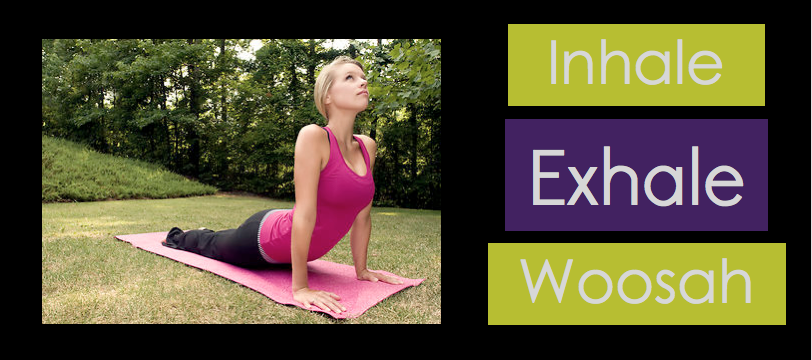Just like expecting mothers perfect their breathing before going into birth, you too should perfect your breathing before your next workout. I know you are probably thinking, “Practice breathing?!?! Isn’t breathing involuntary?” You’re right, yes it is. However in heightened situations the “involuntary” becomes “non existent” in many exercisers and your lungs ability to receive oxygen (inhaling) and get rid of carbon dioxide/waste (exhaling) becomes a little sketchy. So keep reading and learn how proper breathing can make you more comfortable, prevent complications and improve your workouts. Woosah!
1) Make it dynamic.
What kind of breather are you? Let see. Take a deep breath (in through your nose and out through your mouth is preferred, but if you inhale through your mouth that’s cool too). Now, does your chest rise when you inhale or does your belly? If you answered chest then you are a “shallow” breather and are only using 10%-15% of your actual lung capacity. Don’t freak out! Majority of the population breathes this way, however in the game of breathing majority does not rule. Deep breathing (belly rising breath) or diaphragmatic breathing is the best way to experience full breaths not only in the gym but also during rest. So here’s how to up your breathing game. Lie on you back and place your hands on your belly. Now inhale and try to fill it up as if it were a balloon. Then exhale as if you are being cinched into a corset. Feel it? If not don’t stress. This is tricky at first but with patience and practice you will get it. So keep trying while at rest and in your cardio sessions.
2) When it gets tough, release.
In general (wink wink) and in the weight room. Whenever you are strength training or working with resistance it is most efficient to inhale when it’s easy and exhale when it’s hard. The “hard” phase (also known as the exertion phase) typically occurs while lifting, curling, or pushing weight. However if you find yourself mid workout unable to figure out “when” to breathe, just breathe however feels comfortable. Whatever you do don’t hold your breath, as doing so during strenuous activity can cause dizziness or even fainting. It is more important to breathe any kind of way than hold your breath and fall out somewhere.
3) Drop in.
Now on to the cool down! Flexibility is enhanced when you’re able to use your breath in order to relax and therefore deepen a stretch. The more inflexible you are the more likely you are to tense up and hold your breath during stretches. However the key is to drop into a strong diaphragmatic breath and exhale when you feel tight. Doing so will help you deepen the stretch and enhance your overall flexibility. A little tightness is normal, but pain during stretching is discouraged. Basically if you cant breathe, then back of a bit until you can.


No responses yet